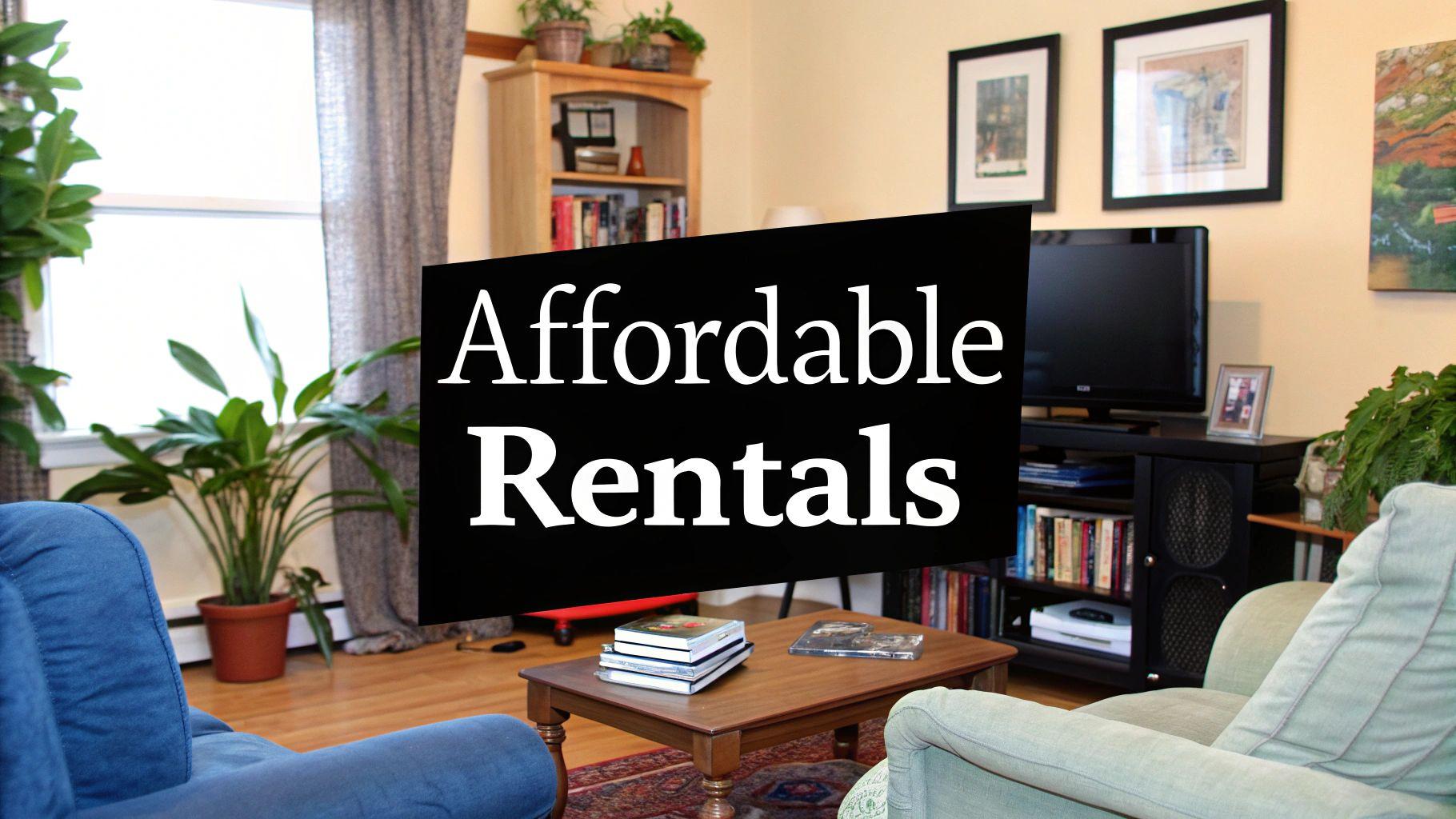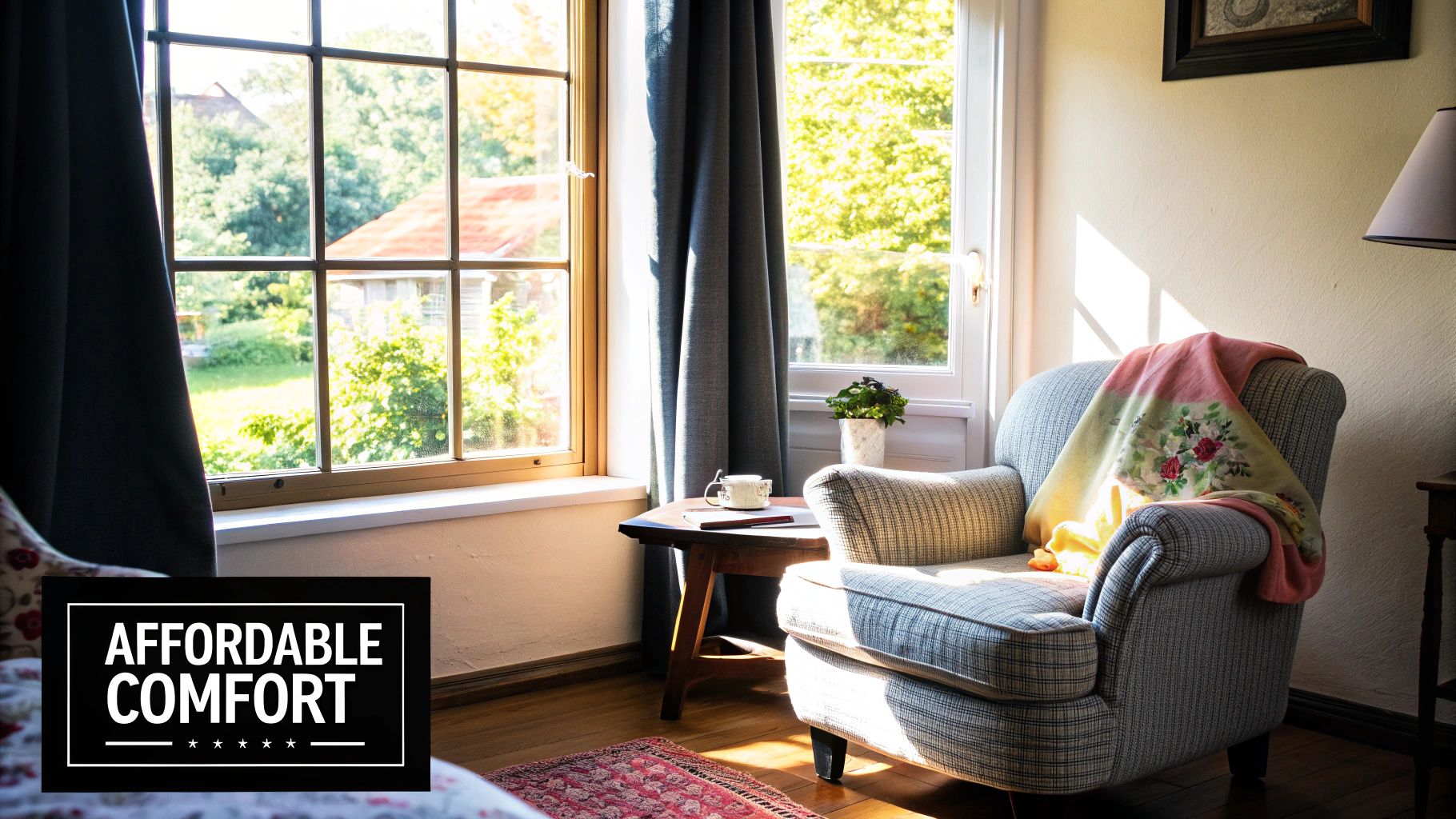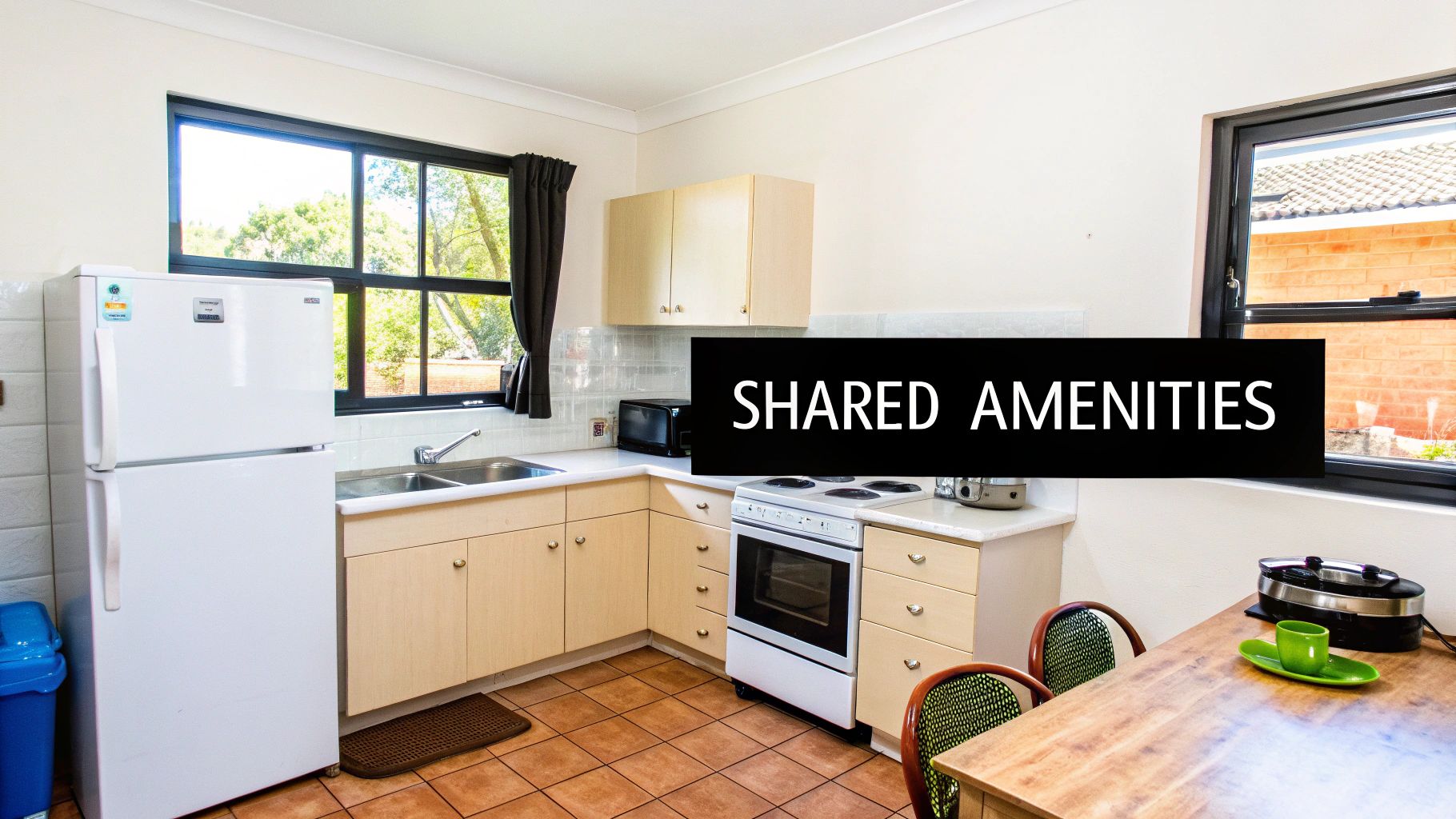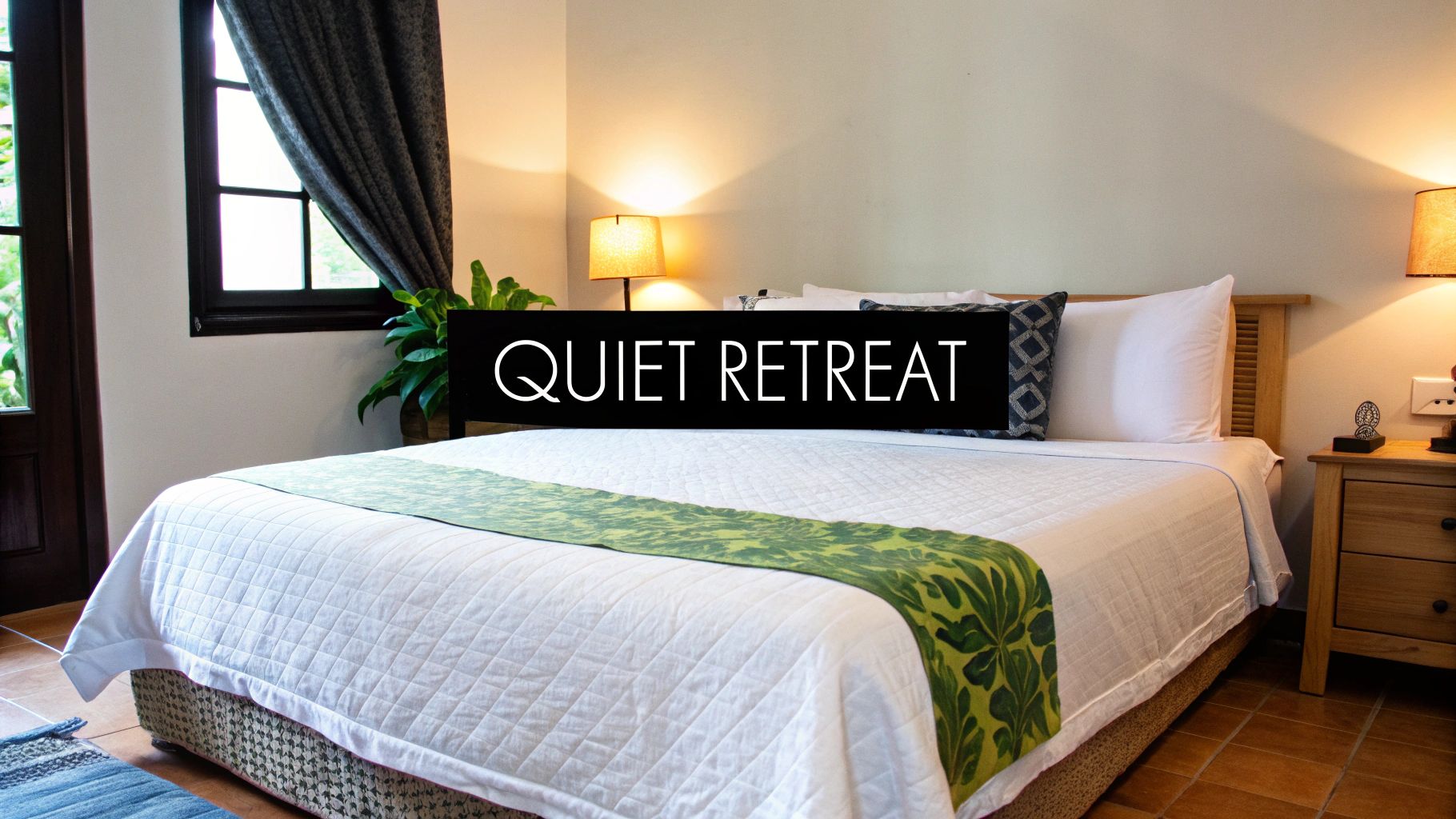
Finding $400 Rooms in Today's Rental Market

Looking for a room to rent at $400 per month takes patience and strategy in the current market. With rental prices steadily rising across the U.S., finding affordable housing has become increasingly difficult. Since average rents are significantly higher than $400, securing a room at this price point means you'll need to search creatively and act quickly when opportunities arise.
The Current Market Reality
Finding a $400 room rental often requires looking beyond traditional apartment listings. While popular rental websites are a good place to start, you'll likely need to expand your search. Consider options like shared houses, basement apartments, or rooms in smaller towns near major cities. These alternatives typically offer better value than standard apartments in city centers. Local Facebook groups, community boards, and word-of-mouth referrals can help you discover affordable rooms that aren't listed on major websites.
Common Myths About Budget Rentals
Many people assume all $400 rooms are in bad neighborhoods or poorly maintained – but that's not always true. With careful searching, you can find clean, safe rooms in decent areas. Another misconception is that rent prices are set in stone. In reality, showing yourself to be a reliable tenant can open up room for negotiation with landlords. Some worry that budget rentals only work short-term, but by building good relationships with property owners, you can often arrange longer stays at affordable rates.
Tips for Finding a $400 Room
Success in finding an affordable room starts with knowing exactly what you need. Make a list of must-haves versus nice-to-haves – are you okay sharing a bathroom? Do you need to be near public transit? Understanding your priorities helps focus your search on realistic options. Don't limit yourself to online listings – tell friends, family and coworkers you're looking. Sometimes the best deals come through personal connections. Stay persistent and check new listings daily, as budget-friendly rooms tend to get snapped up quickly. While finding a $400 room takes work, it's definitely possible with dedication and the right approach.
Planning for Long-Term Success
Once you find an affordable room, focus on maintaining stable housing. Build a positive relationship with your landlord through reliable payment and clear communication. Look into local housing programs that might help with rent assistance or connect you with other affordable options. Some cities offer rent subsidies or affordable housing databases that could be valuable resources. By understanding local rental trends, avoiding common misconceptions, and using practical search methods, you can successfully find and keep a room that fits your $400 budget.
Strategic Location Hunting for Budget-Friendly Rooms

Finding a $400 room rental takes smart planning and knowing where to look. While major cities offer many rental options, their higher average rents often push budget-friendly rooms to outlying areas. The key is expanding your search beyond the obvious spots to uncover hidden opportunities in less prominent locations.
Beyond the City Center: Exploring Affordable Alternatives
Looking just outside busy downtown areas can open up many more options for $400 rooms. These nearby neighborhoods often provide good value while keeping you close enough to city amenities. For instance, small towns within an hour of major cities frequently offer much lower rents while maintaining access through public transit or carpooling. This means you can trade a slightly longer commute for significant monthly savings on rent.
Identifying Emerging Affordable Areas: A Proactive Approach
Smart renters stay ahead of market changes by spotting up-and-coming areas early. Pay attention to neighborhoods getting new public transit lines, businesses, or other improvements. These changes often signal future growth and rent increases. By finding these areas before they become popular, you can lock in a $400 room before prices rise. Watch for construction projects and business openings as signs of developing neighborhoods.
Leveraging Local Market Knowledge: A Key to Success
Understanding rental patterns in your target area gives you an edge in finding affordable rooms. College towns, for example, see predictable shifts in rental availability based on school schedules. Timing your search during low-demand periods can help you negotiate better rates. Also, look for areas with diverse housing options – from single-family homes to small apartment buildings. These mixed neighborhoods often have budget-friendly rooms that bigger rental websites miss. You might be interested in: How to master the rental search.
Evaluating Location Livability: The Affordability-Convenience Balance
While rent price matters most, don't forget about location quality. Check how close essential services are, like grocery stores and public transportation. Look into neighborhood safety and community feel. Consider total monthly costs beyond just rent – factor in transportation expenses, utility bills, and nearby amenities. Finding the right $400 room means balancing affordability with practical needs and looking beyond conventional rental markets.
Creative Housing Solutions That Actually Work

Finding rooms for rent at $400 per month requires getting creative with your search. The average monthly rent in the U.S. is much higher, so traditional apartment hunting likely won't yield many options in this price range. Let's explore some practical alternatives that can help you find affordable housing while building meaningful connections in your community.
Shared Living Spaces: Embracing the Community Aspect
Sharing a house or apartment with others is one of the most practical ways to find rooms within a $400 budget. For example, a four-bedroom house renting for $1,600 total means each person pays $400 for their room. Beyond the financial benefits, living with housemates can create lasting friendships and memorable experiences. Success in shared housing comes down to open communication – have clear discussions about cleaning schedules, quiet hours, and shared spaces upfront. Setting these expectations early helps create a comfortable home environment for everyone.
Housing Cooperatives: Joining Forces for Affordable Living
Housing co-ops offer another path to finding affordable rooms. These member-owned communities often have lower monthly costs since residents share ownership and management responsibilities. Living in a co-op means having a voice in decisions about the property and being part of a close-knit community. Keep in mind that most co-ops require an initial membership fee, which may be a hurdle if you're on a tight budget. Before joining, take time to review the co-op's rules and financial health.
Alternative Rental Arrangements: Exploring Unconventional Options
Several other options can help you stay within a $400 budget. Renting a room in someone's private home often includes access to a full kitchen and laundry. Short-term sublets work well during transition periods. Looking in smaller towns outside major cities usually means much lower rent while still having essential amenities nearby. Whatever option you choose, do your homework – meet potential landlords or housemates in person, get agreements in writing, and check out the neighborhood. For more search strategies, see: Expanding your rental search.
Navigating the Challenges of Alternative Housing
While these creative housing solutions can work well, they do require careful planning. Take time to meet potential housemates and make sure your living styles match. Research co-op membership requirements thoroughly. When renting a room in a private home, discuss house rules and expectations clearly. Being proactive about addressing potential issues upfront will help you find stable, affordable housing that fits your needs. With some flexibility and due diligence, you can discover a $400 room rental that provides both affordability and community.
Mastering the Art of Rental Negotiation

Finding a room for rent at $400 when typical rates are much higher requires smart negotiation skills. Rather than just haggling over price, successful negotiation means showing your value as a tenant while building positive relationships with landlords. Here's how to approach rental negotiations effectively to find an affordable place to live.
Understanding Your Leverage
Start by taking stock of what makes you an appealing tenant. Do you have a spotless rental history and strong references? Are you open to signing a longer lease that provides stability? Perhaps you have skills in home maintenance or gardening that could benefit the property. Making a list of these strengths helps you negotiate from a position of confidence. When meeting with landlords, you can highlight these qualities to stand out from other applicants.
Researching the Local Market
Getting familiar with local rental prices gives you solid footing for negotiations. Check listings for similar rooms in the area – what are they renting for? Look at vacancy rates too, since more empty units often mean landlords are more willing to negotiate. This research helps you have informed discussions about fair pricing and shows landlords you've done your homework.
Timing Your Negotiation
The timing of your search can make a big difference. For example, trying to negotiate during peak rental season when demand is high gives you less room to bargain. But during slower periods, like summer months in college towns, landlords may be more open to lower rates to fill empty rooms. Planning your search strategically around these patterns improves your chances of finding that $400 room.
Building Rapport and Presenting Your Case
Good negotiations rely on strong relationships. Present yourself professionally while clearly explaining what you're looking for. Back up your reliability by offering extra references or background checks upfront. Consider suggesting ways to add value, like handling minor repairs or prepaying rent. This shows landlords you're thinking about their needs too, not just the price.
Negotiating Beyond the Rent Price
While the monthly rate is important, other lease terms offer room for discussion too. You might negotiate lower utility costs, reduced deposits, or included amenities. Even small wins like free parking or flexible payment dates can make a $400 room work better for your budget. Focus on clear communication and finding solutions that work for both sides. With preparation and a positive approach, you can often find common ground that makes affordable housing possible.
Protecting Yourself as a Budget-Conscious Renter
When searching for a $400 room rental, finding an affordable place is just part of the challenge. You also need to protect yourself from potential issues that could impact your finances and wellbeing. Let's explore key strategies to help you rent safely and securely, even on a tight budget.
Understanding Lease Agreements: Your First Line of Defense
Your lease agreement provides essential legal protection for both you and your landlord. When renting a $400 room, you might encounter casual arrangements, but having everything in writing is crucial. Take time to review all sections carefully, especially:
- Lease duration and payment terms
- Utility responsibilities
- Guest policies
- Maintenance expectations
If any part of the agreement seems unclear, ask questions until you fully understand. Getting clarity upfront helps prevent conflicts later. Make sure to keep a signed copy for your records.
Securing Your Security Deposit: Avoiding Common Pitfalls
Your security deposit is a significant investment that you'll want returned when moving out. To protect it:
- Take detailed photos and videos of the room's condition before moving in
- Document any existing damage or issues in writing
- Get clear information about what could lead to deposit deductions
- Keep records of all communications about repairs or maintenance
This documentation creates a clear paper trail that helps ensure you get your deposit back. Save everything in a safe place until after you move out.
Accessing Housing Assistance Programs: Exploring Available Resources
Many programs exist to help renters on tight budgets. These can provide:
- Rent payment assistance
- Help with security deposits
- Support for utility costs
- Free legal advice about renter's rights
- Aid finding affordable housing
Look into both local and national housing programs to find options you qualify for. The extra support can make a big difference in your housing stability. Learn more in our article about Expanding your options with housing programs.
Recognizing and Avoiding Rental Scams: Protecting Your Finances
Scammers often target people searching for budget rentals like $400 rooms. Watch out for these red flags:
- Prices far below market rates
- Pressure to pay before viewing the property
- Requests for unusual payment methods
- Reluctance to show proper documentation
- Limited or suspicious communication
Always verify the landlord owns the property and trust your instincts if something feels wrong. Taking time to check things out thoroughly helps you avoid costly rental scams.
Building Long-Term Housing Success
Finding a $400 room rental is a great first step, but keeping affordable housing long-term requires careful planning and relationship building. Success means thinking about how to maintain good connections with your landlord, build community ties, and adapt when market conditions change.
Cultivating Positive Landlord Relationships
A strong relationship with your landlord can help you keep your $400 room rental affordable over time. Pay rent consistently and communicate openly about any issues that come up. If you notice a maintenance problem, bring it up right away before it gets worse and more expensive to fix. Consider offering to handle small repairs yourself when appropriate – this shows you care about the property. Taking this kind of initiative often pays off when it's time to renew your lease or discuss future rent.
The Power of Community in Affordable Housing
Your neighbors and local community can help you maintain affordable housing success. Get to know the people around you – they often share tips about local deals, reliable repair services, and upcoming housing options. Even simple things like attending a neighborhood gathering can open doors. You might meet potential roommates, learn about job opportunities that could help your housing budget, or hear about other affordable rentals in the area.
Adapting to Market Changes While Maintaining Affordability
Keep an eye on what's happening in your local rental market so you're ready when things change. Watch for trends in rent prices and vacancy rates in your area. Learn about local housing rules and programs that could help if you need it, like rent control or assistance options. Being prepared helps you make smart choices about negotiating rent or finding new housing if needed.
Real-World Examples of Long-Term Success
Take Maria's story – she found a $400 room in a shared house and built trust by paying on time and joining house meetings. When her landlord sold the property, her good relationships led to another affordable room in the landlord's new building. Or consider David, who used his community connections to find a $400 room in an up-and-coming area early on, locking in lower rent before prices went up.
Finding a $400 room rental opens the door, but keeping affordable housing takes ongoing effort. Focus on your landlord relationship, get involved in your community, and stay informed about market changes to create stable, affordable housing for the long run.
Want to connect with others and find more opportunities in the U.S.? Check out Foreigner Bazaar, an online community that brings together people interested in exploring different cultures. Find local events, authentic international food, and helpful resources for living in your new home.



